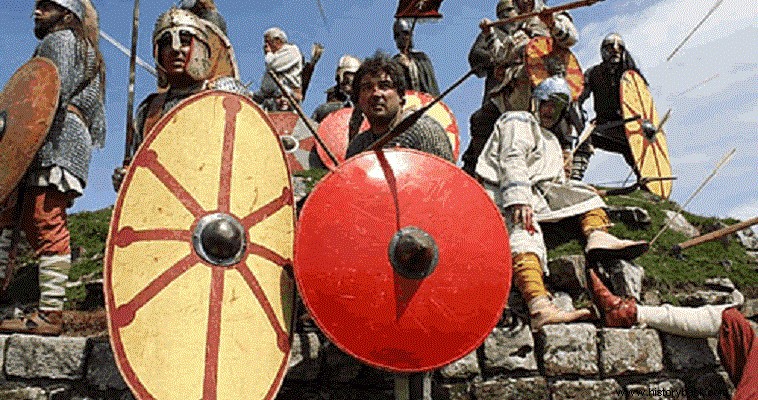
In 554 AD an army of 75,000 Franks, Alamanni, Thuringians, and other Germans, under the dukes Lothario and Butellinus, crossed the Po and marched into lower Italy. General Narses, the regent of Italy, however, upon hearing the news of the Frankish invasion, moved swiftly, at the head of powerful forces, towards the region.
But the winter of 554 AD turned out to be particularly fierce. Thus operations were suspended and both armies wintered in the territories they occupied. In the spring of 555 AD operations resumed. The Franks split their forces. Lothario's forces moved north, trying to return home, being plagued by epidemic disease, and Buthelinus' forces, being in better condition, moved south to conquer Italy.
The vanguard of Lothario's army eventually fell into a Byzantine ambush and was disbanded. Only a few remnants of this army reached the Frankish lands. Lothario himself died of disease. But Butelinos continued his march on Italian soil. Finally the two armies met in the region of Campania near the city of Capy, at the site of Casilinum, in the Volturno.
Butelinus wished to hasten the conflict because his own army was now plagued by an epidemic. After all, he was outnumbered. According to the historian Agathias the Scholastic, the Frankish Army had about 30,000 men, the vast majority of them infantry.
Against them Narses had no more than 18,000 soldiers. Butelinus ordered his men into three huge wedges, of great depth. His intention was to split the Byzantine center. To counter this threat Narses formed his center of heavy infantry divisions, with heavily armored footmen (Porakhus) in the front line.
The Byzantine phalanx was reinforced at its ends, like the Athenian hoplite phalanx at the Battle of Marathon. Behind the heavy infantry, archer corps were lined up to support the heavy infantry with overhead shots. Behind the infantry was a division of cavalry. Another 3,000 horsemen lined up on the right, led by Narses himself. On the left were 1,500 horsemen. Another 2,000 horsemen were ambushed, behind the right flank of the Franks, covered by a forest.
The battle began with a swift attack by the Frankish infantry against the Byzantine center. The barbarians managed to achieve a breach in the Byzantine front. However, the involvement of the reserves at the right moment closed the gap. A general counterattack by the Byzantine cavalry followed. The Franks were almost surrounded and literally annihilated. The sources state that of the 30,000 men of Butelin only five returned to their homeland. Narses' victory was overwhelming.
